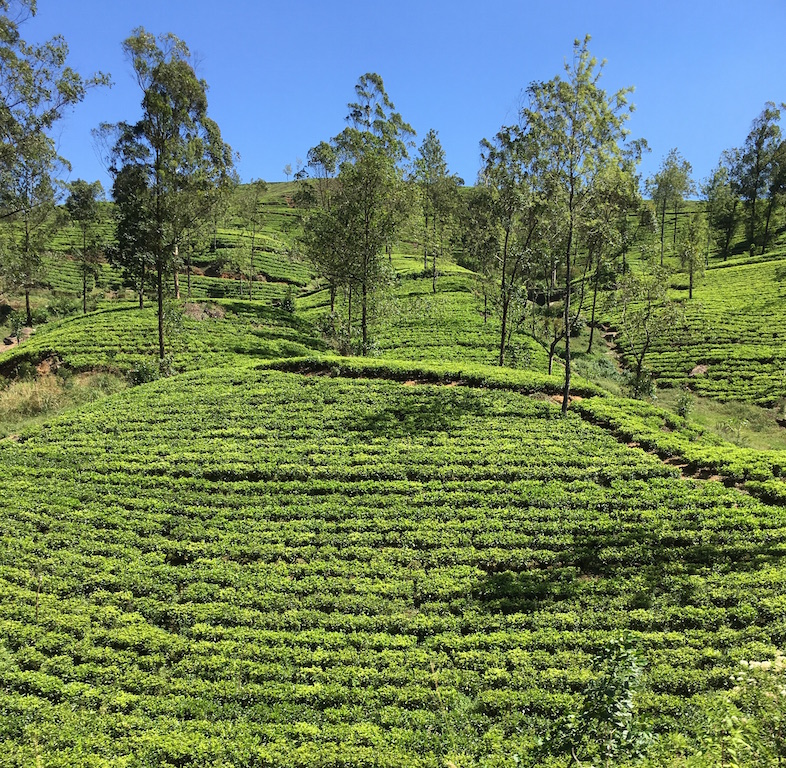
The Philosophy of Coffee, a book by coffee blogger Brian Williams revealed an interesting fact about coffee that not many people know about. That is, coffee was commercially grown in Sri Lanka in the 1600s and introduced by The Netherlands East India Company (VOC) way before tea was planted.
According to Williams, VOC’s merchant Pieter van den Broecke, who was one of the first few Dutch merchants that tasted coffee, brought coffee trees to Europe in 1616. The plants were cultivated in greenhouses in Amsterdam for over 40 years before they were brought to Sri Lanka. Williams wrote:
This was the first large-scale cultivation of coffee outside Yemen, and represents the beginning of the spread of coffee cultivation around the world.
Before reading The Philosophy of Coffee, I had no idea that Sri Lanka played such an essential role in the history of coffee. We tend to associate the country formerly known as Ceylon with the Ceylonese tea. And rightfully so. Last month, my husband and I spent eight days traveling with a private driver/guide in Sri Lanka. One of the fascinating places was Nuwara Eliya, also known as Little England. At over 6,000 feet above sea level, Nuwara Eliya is surrounded by thousands upon thousands of acres of rolling tea terraces. And not a trace of coffee in the mountains at all.
However, my ears perked up when our driver Sam mentioned his mother’s small coffee farm in the mountains. I sat up straight and asked “Coffee?” Yes, Sam said and continued, “There’s a demand for coffee beans now! Coffee buyers from Colombo come to the mountains to buy coffee from farmers like my mother’s.” I didn’t get to see the farms. The only coffee plants I saw was at a spice garden catered to tourists in Kandy.
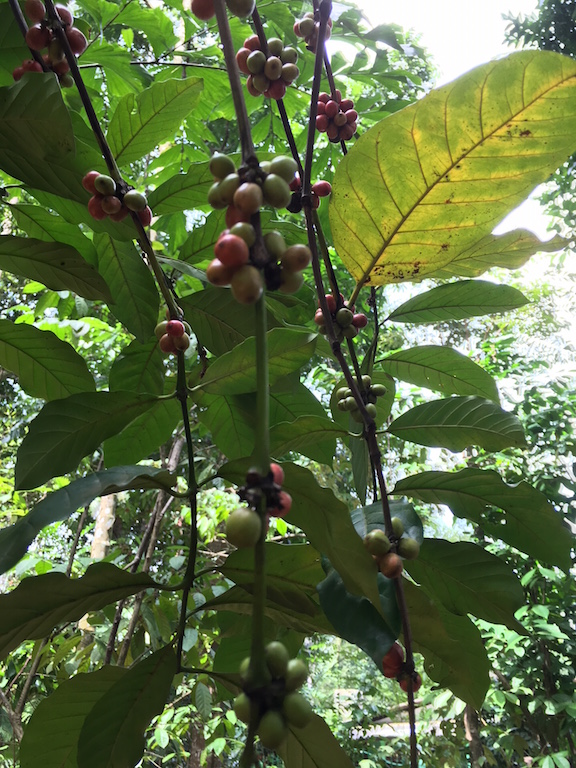
Coffee is making a comeback in Sri Lanka. I saw signs of it in Colombo, the capital city of Sri Lanka and in Galle, a town in the southwest coast.
I also came across an informative article by Anthony Dennis on Traveller, Coffee in Sri Lanka: a brewed awakening. Read it and find out how the coffee plantations were replaced by tea and about the revival of coffee in Sri Lanka. My experiences with coffee were limited to those served in the hotels I stayed at which was unfortunate.
Just for fun, I took a few snapshots of my coffee in five hotels:
1. Coffee at Unawatuna Beach Resort
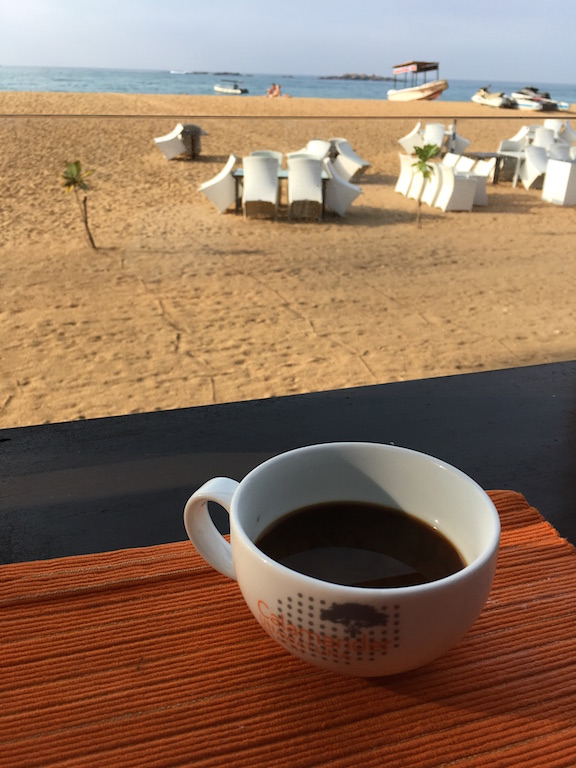
Unawatuna is about a two and a half hour drive from Colombo and a 10-minute drive from the historic Galle Fort, on the south coast of Sri Lanka. Though the coffee was so-so, the ocean view and proximity to water made it an outstanding experience.
2. Coffee at The Grand Udewalawe Safari Resort
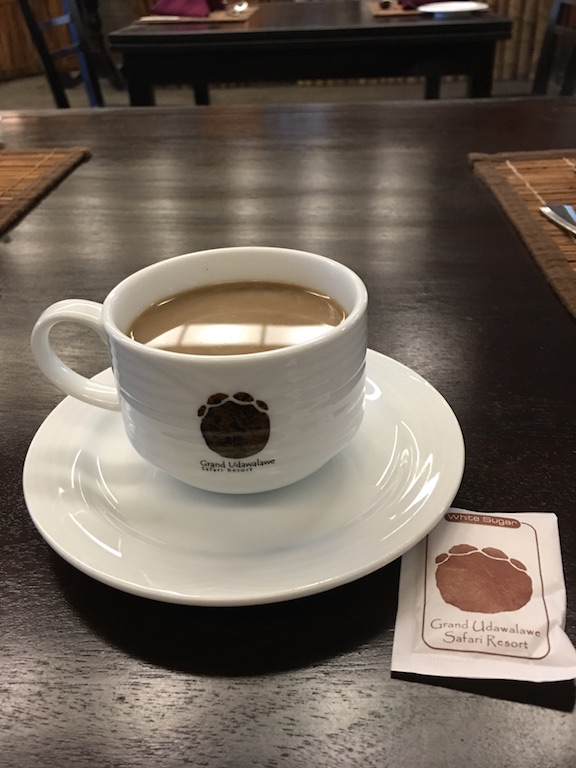
Located 20 minutes from the Udawalawe National Park, the Grand Udewalawe Safari Resort is set in a wooded area where monkeys roam freely. There’s no view at the hotel’s restaurant.
3. Coffee at Jetwing St Andrews, Nuwara Eliya
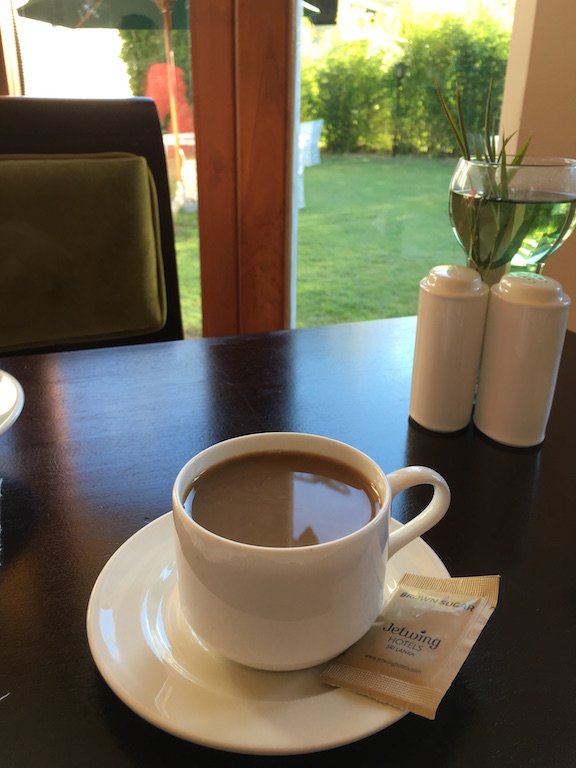
During late evenings and early mornings, Nuwara Eliya can be a bit chilly. At Jetwing St. Andrew’s the fireplace was at work in the evening and hot tea was available throughout the day. In the morning, this cup of coffee was very welcoming. The Old Course, an excellent restaurant at the hotel serves up a delightful array of Sri Lankan and international foods on the buffet tables.
4. Coffee at OZO Kandy

Unlike the other hotels where a uniformed server would make their rounds from table to table with a pot of coffee, at OZO, it was self-service. In this photo, I had coffee with my favorite egg hopper with chili onion sambol.
5. Coffee at Aliya Resort in Habarana

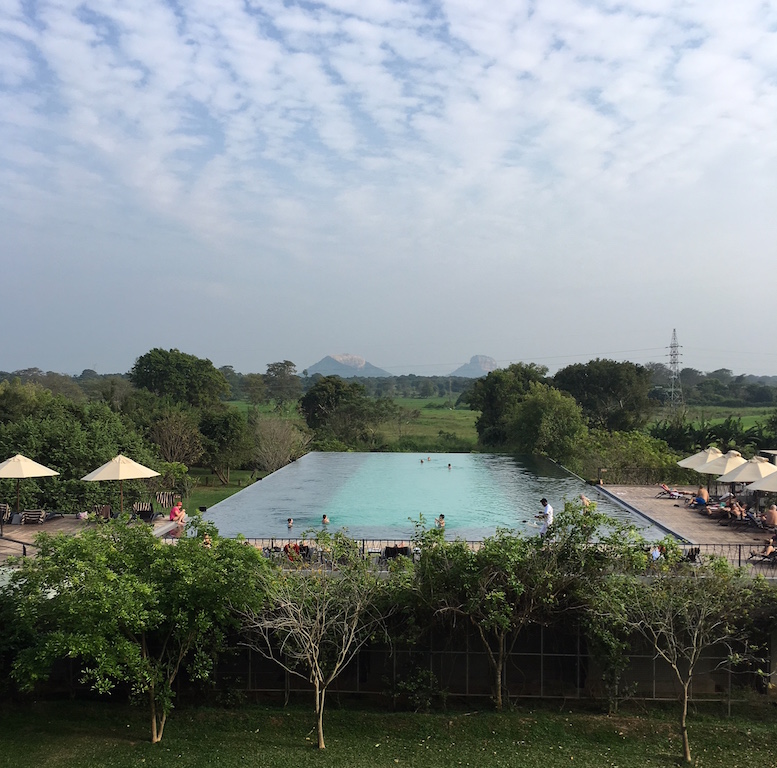
Aliya’s Alaka restaurant had the best coffee, food, service and the most magnificent views of Sigiriya Rock Fortress and Pidurangala Rock Temple. It has an idyllic spot to relax and have a cuppa – either coffee or tea.
From Yemen, Sri Lanka and India, “coffee generally followed the spread of European commercial ambitions” wrote Brian Williams, in his book, The Philosophy of Coffee.
Get the book if you would like to trace the spread of coffee from Ethiopia and Yemen, to Sri Lanka, India, Indonesia and how it went to the hands of French King Louis XIV in 1714.




Leave a Reply